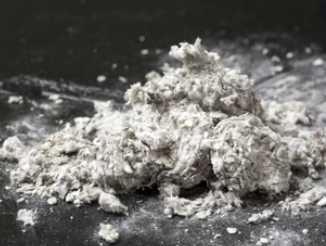Asbestos Characterization Using the iEM Platform

Several techniques have been developed to perform asbestos testing and analysis of asbestos minerals and synthetic fibers, including microscopical techniques, namely polarized light microscopy (PLM) and electron microscopy (EM) and nonmicroscopical techniques such as x-ray diffraction (XRD) and infra-red spectroscopy (IRS). At the iEM Platform, we offer scanning electron microscopy (SEM) with energy-dispersive X-ray spectroscopy (EDS) to characterize the asbestos minerals. We are committed to providing customized solutions for a wide range of asbestos analysis needs.
Asbestos
Asbestos, including chrysotile, amosite, crocidolite, fibrous tremolite/actinolite, and fibrous anthophyllite, is a group of natural fibrous minerals characterized by high-temperature resistance, chemical resilience, and isolation from heat and noise. These asbestos minerals can be extracted from mines and their processing is cheap. Asbestos has a variety of applications, such as clothing making, construction, and some household appliances. Except for chrysotile, which belongs to the serpentine group of minerals and is a layered silicate. Other asbestos minerals are hornblende, which belongs to the chain silicate group. And chrysotile is the only asbestos mineral that would be found in a woven fabric. However, the high pathogenicity of this material is currently known to be associated with the development of lung disease. The determinants of asbestos fiber toxicity are determined by a variety of factors, including dose, size, surface reactivity, and the genetic history of the exposed individual. Since they are considered a potential health hazard, the use of asbestos and asbestos-related materials is limited.
Service Offering at the iEM Platform
Creative Biostructure has years of experience in imaging and analyzing a variety of materials. Our unique platform consists of a suite of advanced microscopy technologies, including SEM, TEM, and corresponding accessories and software. We are proud to offer scanning electron microscopy energy-dispersive X-ray spectroscopy (SEM/EDS) for asbestos analysis.

SEM is primarily used for asbestos analyses in air, water, bulk, and dust samples. Our SEM/EDS identifies the particle shape first and then their chemical composition, enabling accurate and rapid quantitative measurements of asbestos and its fibers. Our method has been validated on asbestos standards with a relative error of < 10% for repeated measurements. Advantages of the asbestos analysis by means of SEM/EDX:
-Short processing time.
-Reliable analysis of asbestos appearance and chemical composition.
-Determine whether asbestos is present and the type of asbestos.
Choose Creative Biostructure to Help You with Customized Asbestos Analysis
Determination of asbestos in the air.
Determination of asbestos in dust, soil, and rock.
Determination of asbestos in water.
Determination of asbestos in lung biopsy samples.
Determination of asbestos in construction and demolition.
Asbestos and asbestos-related materials have been used as fireproofing construction materials, paper, insulators, and textile materials for a long time. These hazardous fibers can spread to the surroundings. Asbestos fiber contamination should be identified as early as possible due to its potential health hazards to humans. Compared to the industry standard PLM, SEM can provide a variety of crucial information including local chemistry information when combined with EDS. SEM can be served as a standard tool to improve the detection of asbestos and related materials. If you are interested in our services, please don't hesitate to contact us.

